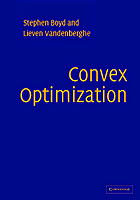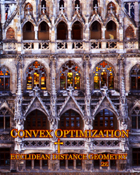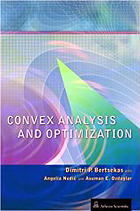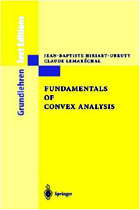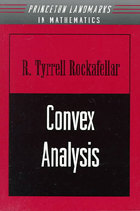 Convex Cones
Convex Cones | Convex Cones |
|
We call a set K a convex cone iff any nonnegative combination of elements from K remains in K. The set of all convex cones is a proper subset of all cones. The set of convex cones is a narrower but more familiar class of cone, any member of which can be equivalently described as the intersection of a possibly (but not necessarily) infinite number of hyperplanes (through the origin) and halfspaces whose bounding hyperplanes pass through the origin; a halfspace-description. The interior of a convex cone is possibly empty. Familiar examples of convex cones include an unbounded ice-cream cone united with its interior (a.k.a: second-order cone, quadratic cone, circular cone, Lorentz cone) and any polyhedral cone; e.g., any orthant generated by Cartesian axes. Esoteric examples of convex cones include the point at the origin, any line through the origin, any ray having the origin as base such as the nonnegative real line in a subspace, any halfspace partially bounded by a hyperplane through the origin, the positive semidefinite cone, the cone of Euclidean distance matrices, any subspace, and Euclidean vector space. More Euclidean bodies are cones, it seems, than are not. This class of convex body, the convex cone, is invariant to nonnegative scaling, vector summation, affine and inverse affine transformation, Cartesian product, and intersection, but is not invariant to translation. |


